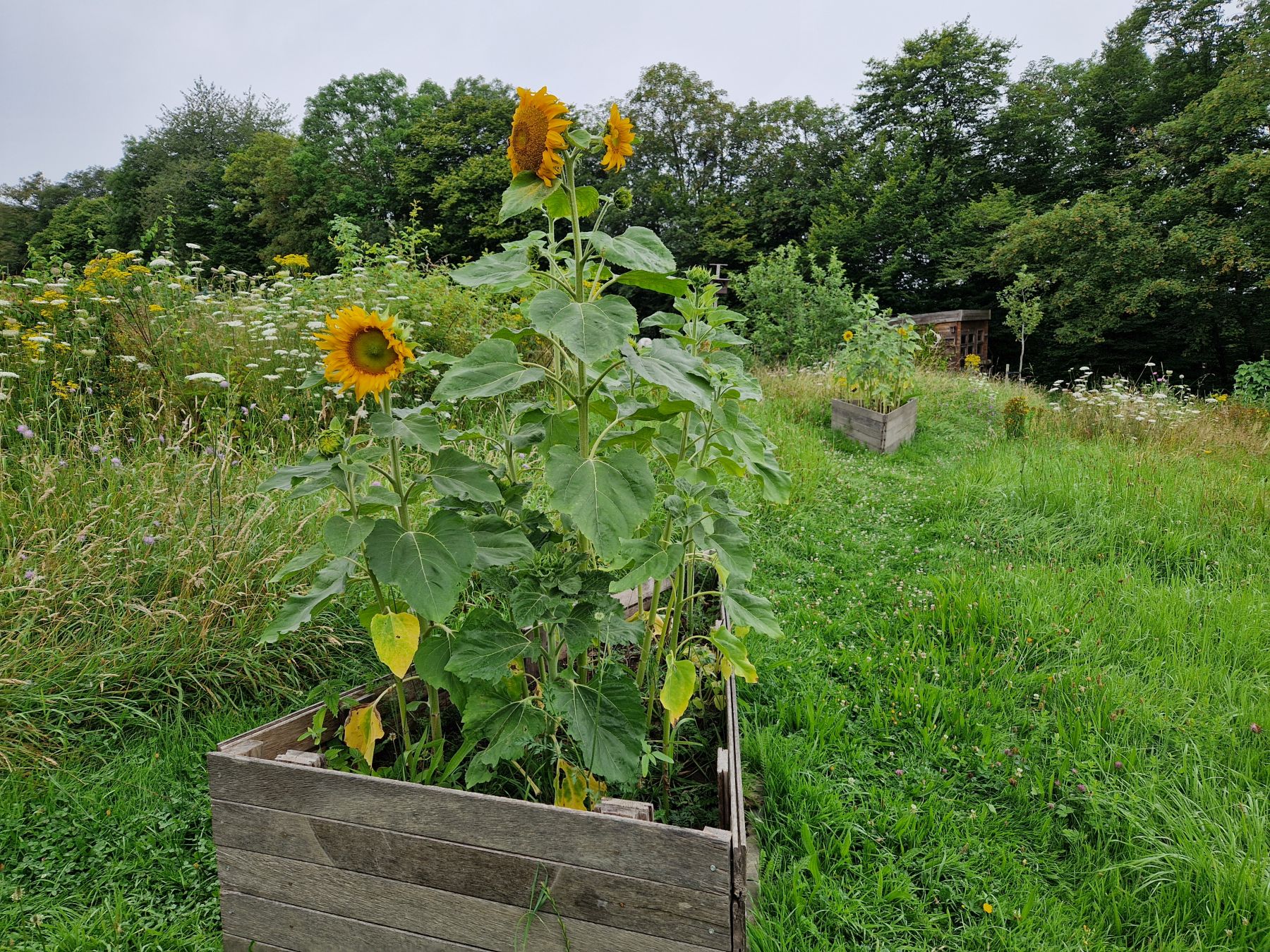
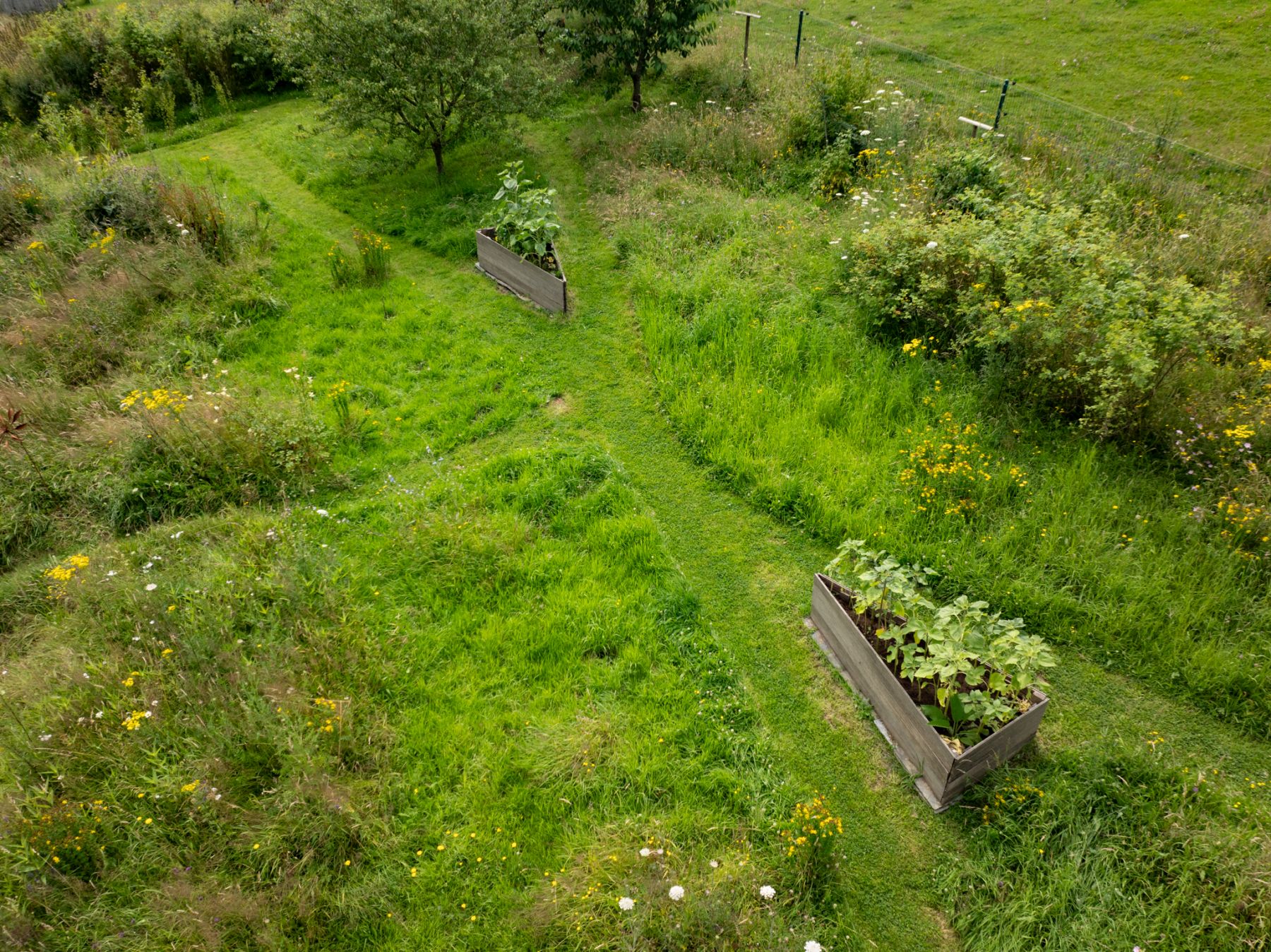
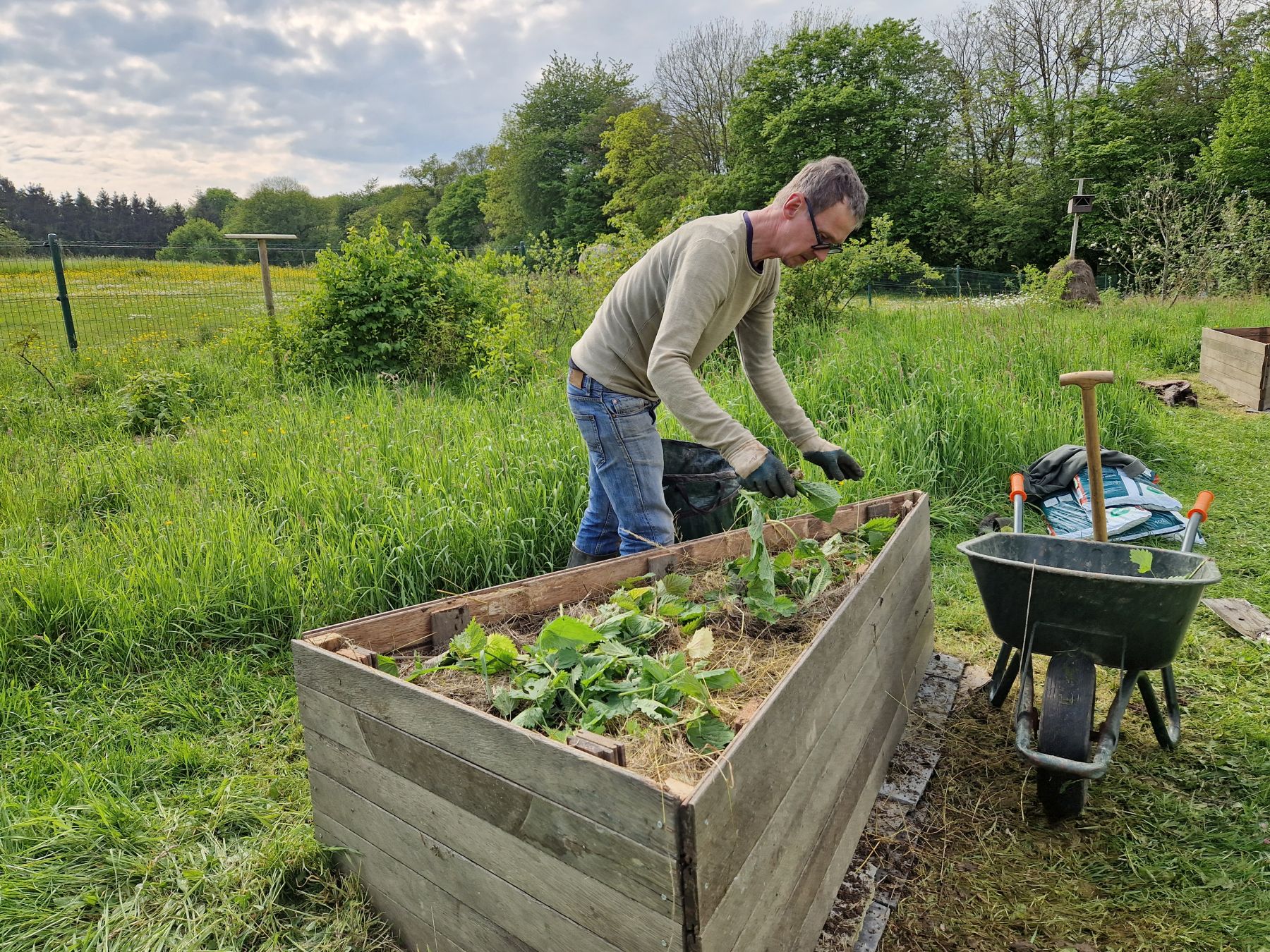
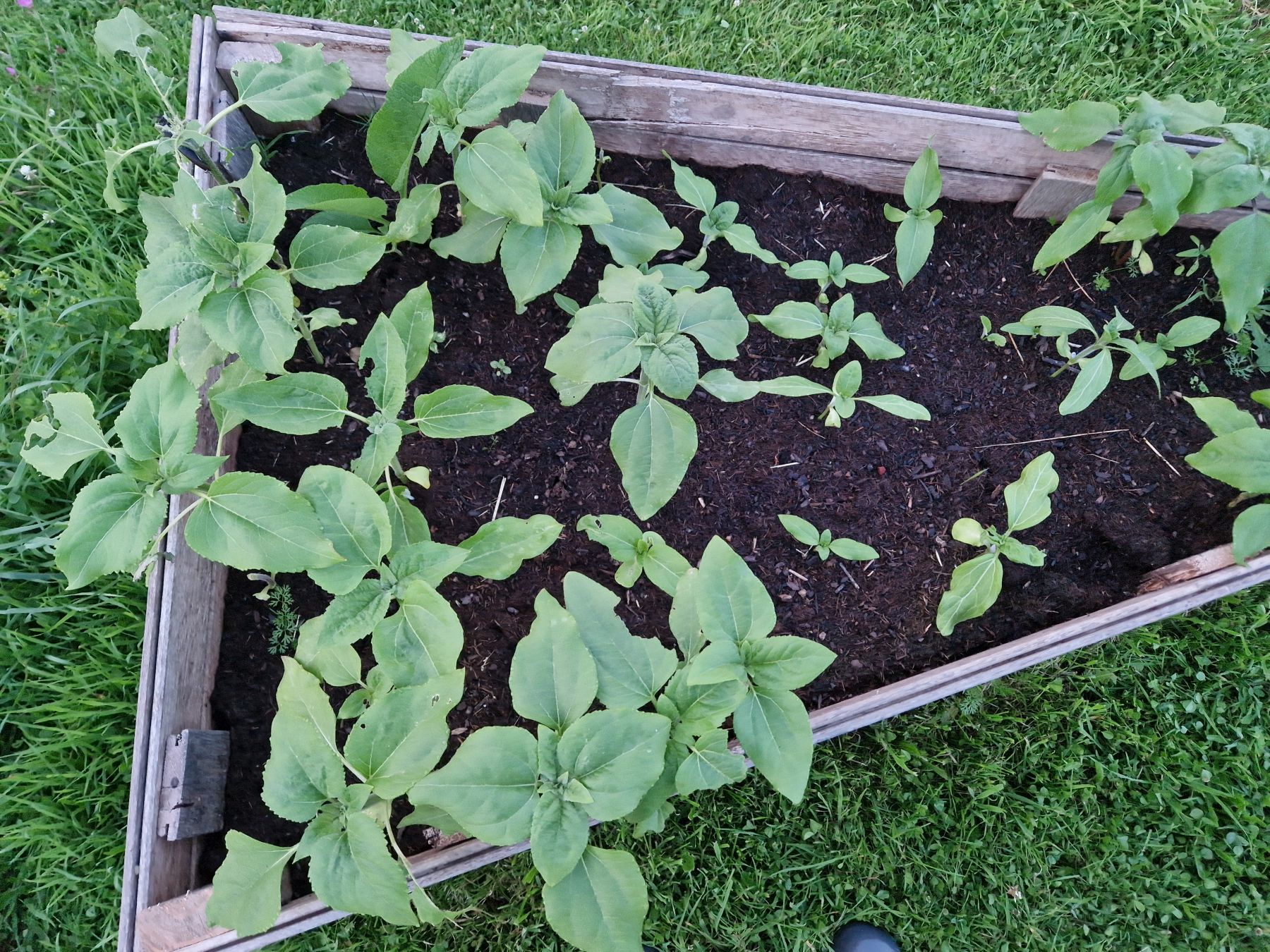
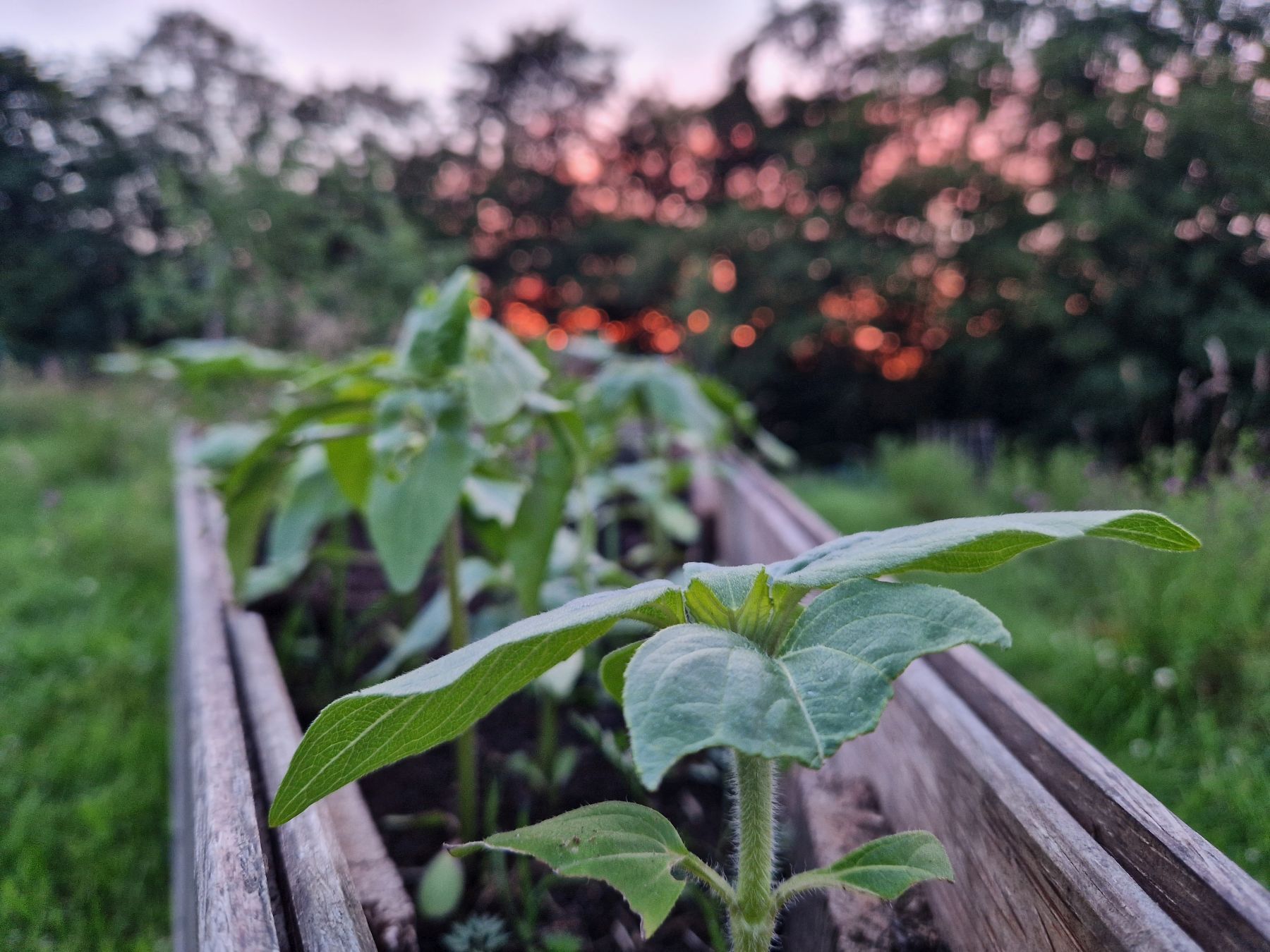
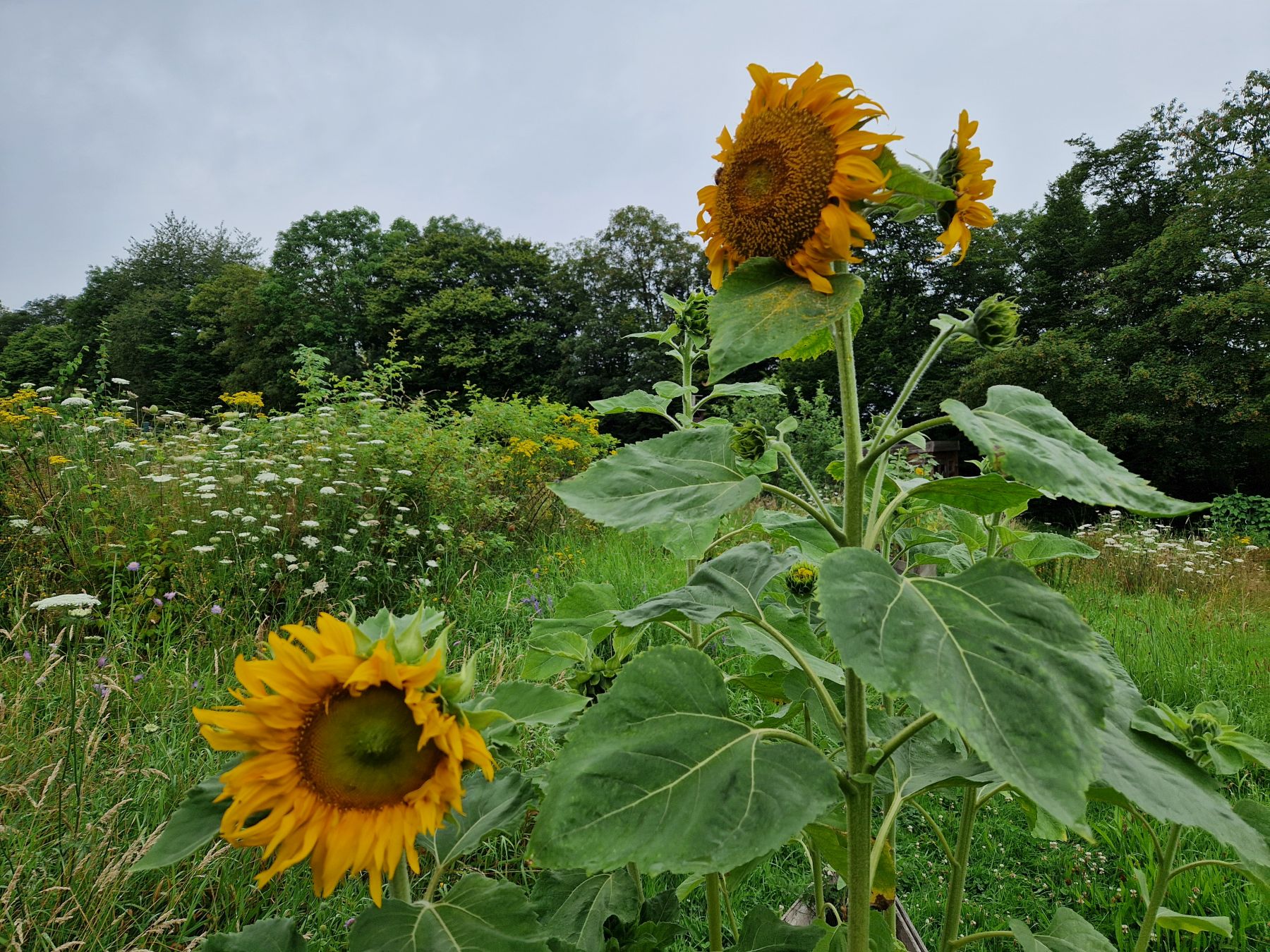
Lasagna gardening
27/07/2024
If you have a difficult soil like ours - a shallow stony soil or a sandy soil with almost no humus layer - in which plants struggle to take root or thrive, there is a creative solution to make your own fertile soil. It is called lasagna gardening or sheet mulching and can be done in the vegetable garden, in a plant border, but just as easily directly on the lawn or in a raised bed. Continue reading to find out more and get started yourself!
As the name suggests, lasagna gardening involves working in layers with organic materials that slowly compost into fertile soil. As with compost, you use both brown and green organic material. Some examples:
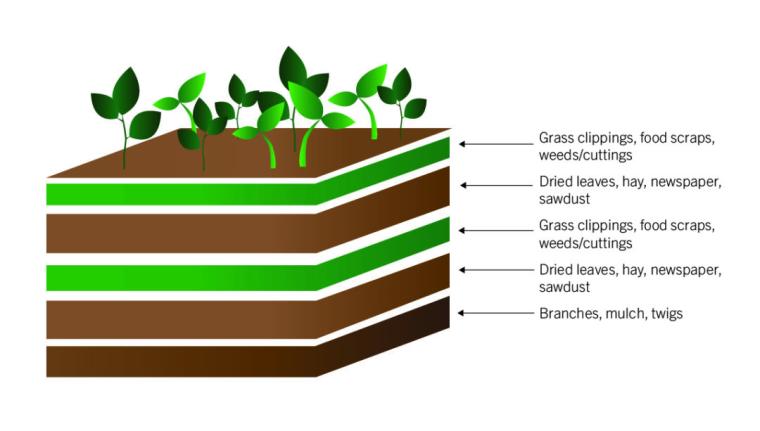
It's best to choose a sunny spot -minus 6 hours of sunshine a day- in your garden. We put brown unprinted cardboard at the bottom to prevent herb growth. Some people let ‘their lasagne’ compost on site first and then plant in it only 6 months later. We were a bit more impatient at the beginning of this summer and put a layer of soli and potting soil on top to plant immediately. A lasagne of 20-30 cm is already sufficient, but it can just as easily be 80 cm in higher bed with logs at the bottom. This approach requires little maintenance, but of course you need sufficient organic material, which is more readily available in autumn. Lasagne gardening is an ideal way to give new life to your organic garden waste rather than disposing of it. Long live circularity!
Lasagne gardening is a form of ‘no dig, no till’ gardening, as used in permaculture. The principle is that you don't stir or dig over the soil. This way your soil food web stays intact. That is vital as you need all those soil organisms to break down your organic matter. The added value is that over time you get a nutrient-rich loose and moist soil. The principle is like that of hügelkultur raised beds which we wrote about in a previous IMBY blog.

And then it's time to sow or plant. Either you can plant vegetables like leeks, onions, carrots, radishes, lettuce or harvest flowers that are a more demanding than native wildflowers. I love sunflowers and so do bees, bumblebees and butterflies who feed on its nectar and pollen, and birds on the seeds.. After 2 years of unsuccessful attempts of sowing directly sunflowers in the soil or pre-sowing and transplanting, the lasagne approach is now succeeding just fine. Cosmos or other cultivated flowers also grow well this way.
Create your own garden lasagne and be sure to share your photos on our social media. Have fun!
As the name suggests, lasagna gardening involves working in layers with organic materials that slowly compost into fertile soil. As with compost, you use both brown and green organic material. Some examples:
- Brown material: dried leaves, branches, hay, cardboard, bark, prunings, straw, pine needles/cones, mulch
- Green material: coffee grounds, cut grass, moss, green kitchen waste, compost, old chicken manure. Some herbs are also useful; nettles are high in nitrogen and comfrey and even seaweed high in minerals.

It's best to choose a sunny spot -minus 6 hours of sunshine a day- in your garden. We put brown unprinted cardboard at the bottom to prevent herb growth. Some people let ‘their lasagne’ compost on site first and then plant in it only 6 months later. We were a bit more impatient at the beginning of this summer and put a layer of soli and potting soil on top to plant immediately. A lasagne of 20-30 cm is already sufficient, but it can just as easily be 80 cm in higher bed with logs at the bottom. This approach requires little maintenance, but of course you need sufficient organic material, which is more readily available in autumn. Lasagne gardening is an ideal way to give new life to your organic garden waste rather than disposing of it. Long live circularity!
Lasagne gardening is a form of ‘no dig, no till’ gardening, as used in permaculture. The principle is that you don't stir or dig over the soil. This way your soil food web stays intact. That is vital as you need all those soil organisms to break down your organic matter. The added value is that over time you get a nutrient-rich loose and moist soil. The principle is like that of hügelkultur raised beds which we wrote about in a previous IMBY blog.

And then it's time to sow or plant. Either you can plant vegetables like leeks, onions, carrots, radishes, lettuce or harvest flowers that are a more demanding than native wildflowers. I love sunflowers and so do bees, bumblebees and butterflies who feed on its nectar and pollen, and birds on the seeds.. After 2 years of unsuccessful attempts of sowing directly sunflowers in the soil or pre-sowing and transplanting, the lasagne approach is now succeeding just fine. Cosmos or other cultivated flowers also grow well this way.
Create your own garden lasagne and be sure to share your photos on our social media. Have fun!
Comments
- Dank je voor de superheldere uitleg! Gaan we toepassen in onze nieuwe bakken. (Sabine)
- Le jardinage en lasagne est une idée brillante pour transformer un sol difficile en une terre fertile tout en recyclant les déchets organiques ! (aisyah)
Add a comment


